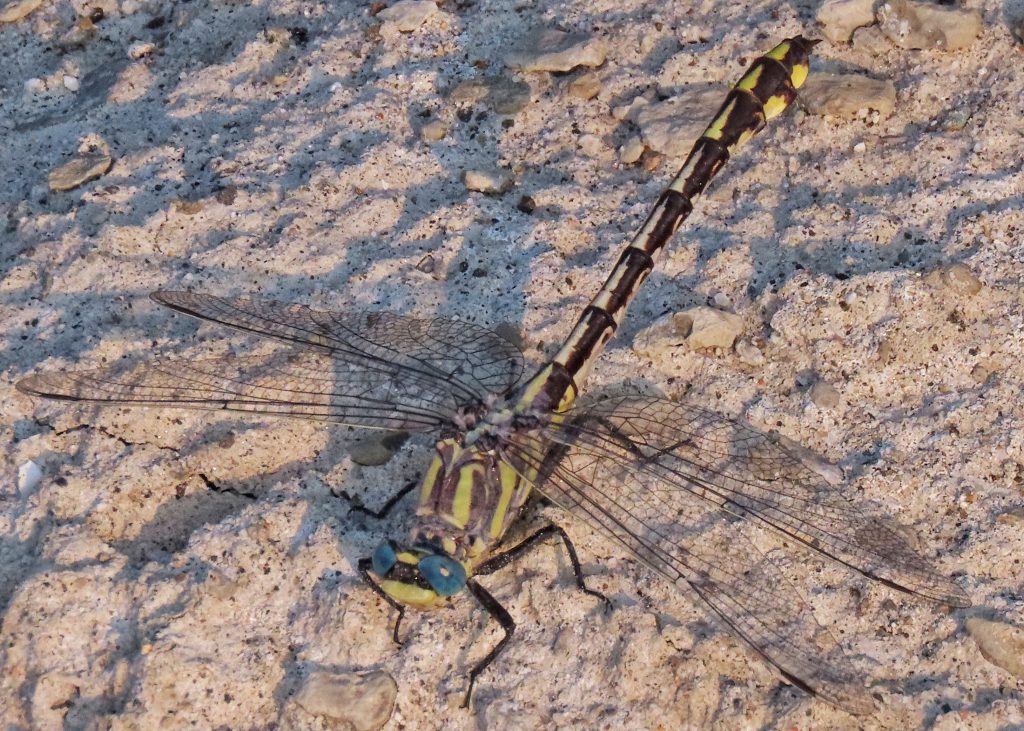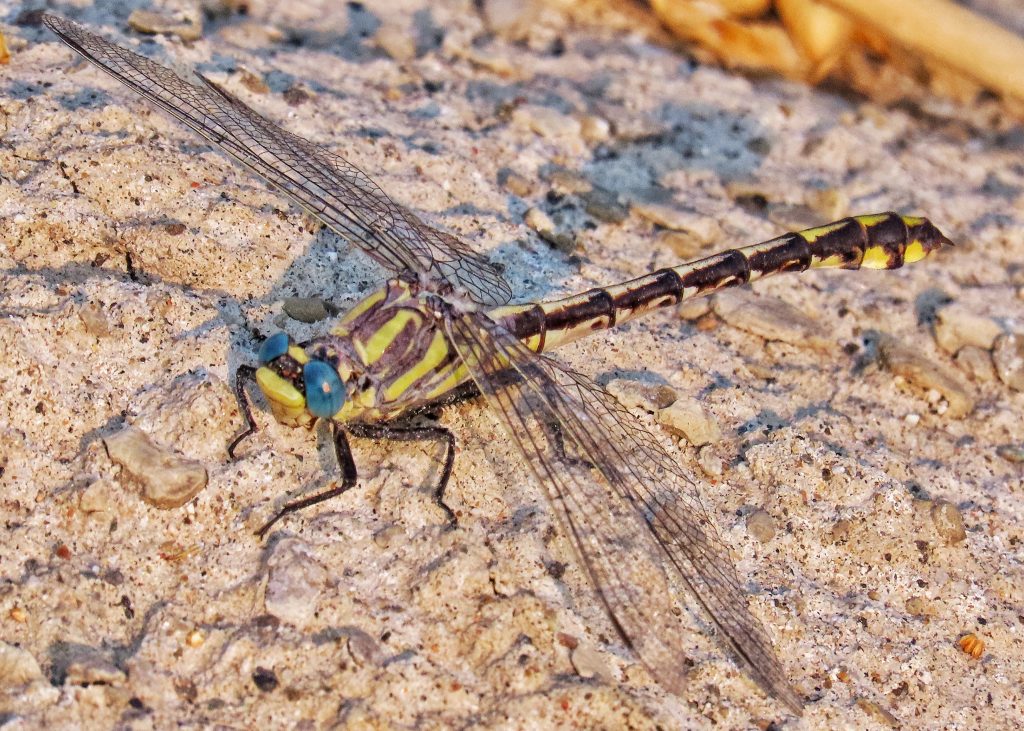
This species was discovered by Mary Lynne Paulson at Horn Rapids on the Yakima River in 1971, and described by Dennis Paulson in 1983. It is the most recently described dragonfly in the PNW. Its only known populations are in the Columbia River Basin, the John Day River Area in Oregon, and the Owyhee River Area in se Oregon/sw Idaho. However a single specimen was found in northern Nevada, and a single specimen was found in New Mexico, indicating that it may be more widespread than previously thought.
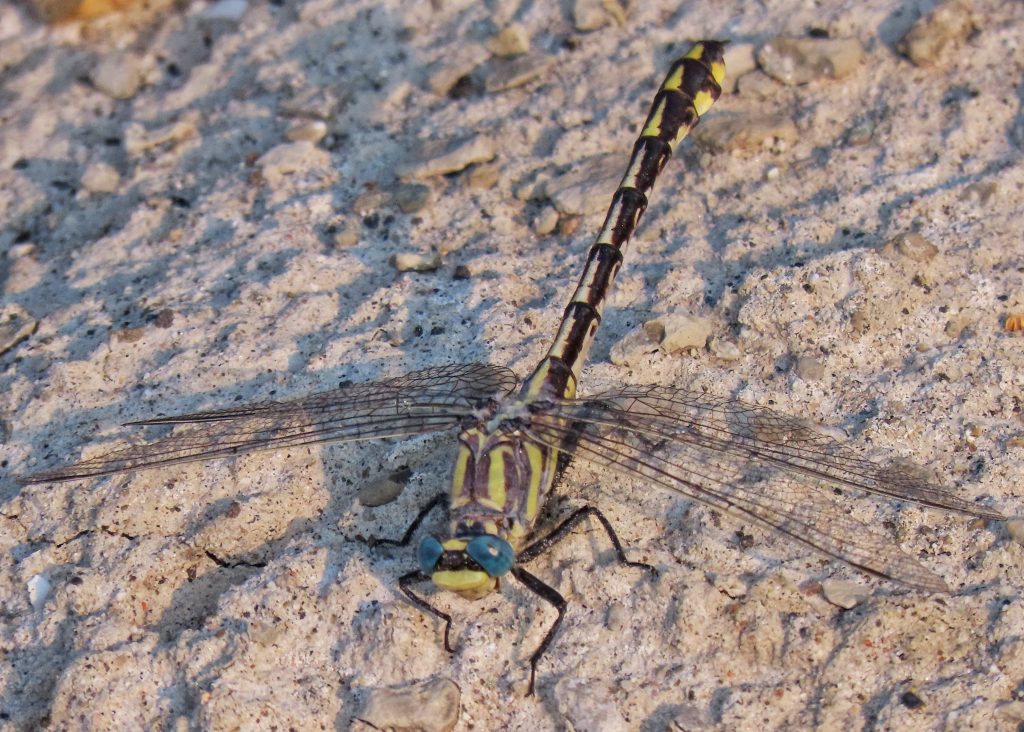
This is a member of the family Gomphidae (clubtails; for distinguishing traits of clubtails click here), and is now in the genus Gomphurus, which had been a subgenus of Gomphus. But a recent study of their molecular biology (Ware, Pilgrim, Tennessen; 2017) found that all of the North American subgenera of Gomphus deserved full species status, and left the Western Hemisphere devoid of Gomphus spp.
The Columbia Clubtail has blue eyes and a yellow face. The thorax is yellow with 5 black stripes, whereas Phanogomphus kurilis (Pacific Clubtail) and P. graslinellus (Pronghorn Clubtail) have 3. The abdomen is black with pale to bright yellow darts on the median and sides. The terminal segment (S10) has a yellow mark, which P. kurilis lacks. And Gomphurus lynnae is larger (total length 54-60mm) and has a larger club than either P. kurilis (TL 47-56mm) or P. graslinellus (TL 47-53mm). But the most distinguishing characteristic of the Columbia Clubtail is the pruinosity on the thorax and first two abdominal segments of both males and, even more surprising, females. No other clubtail in our region displays pruinosity.
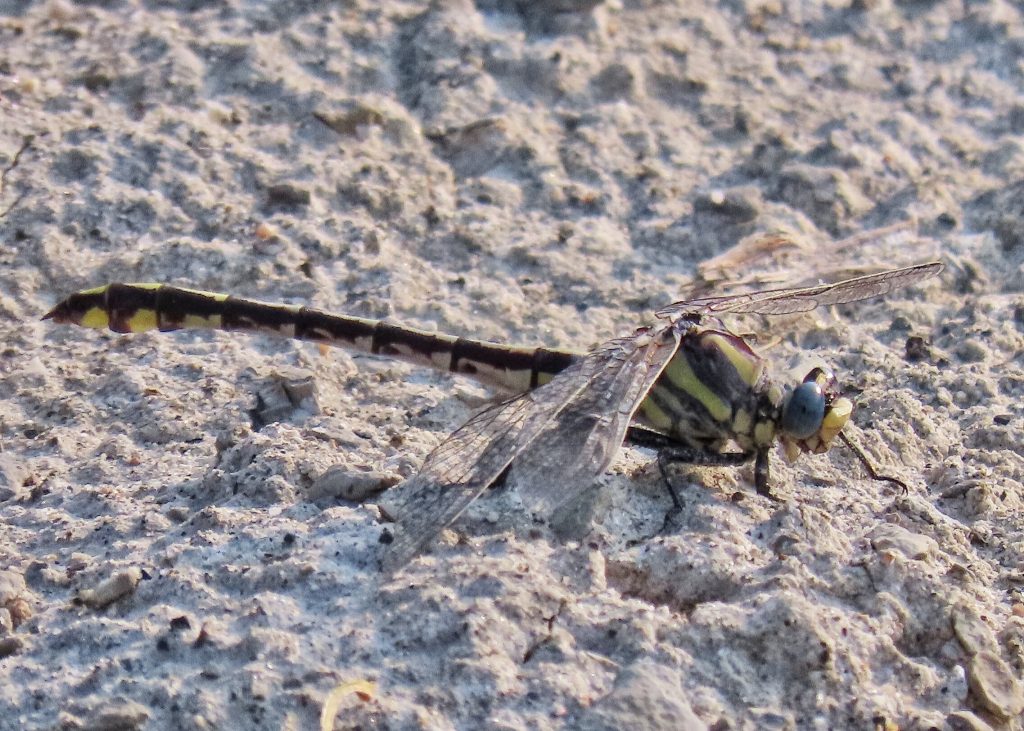
They are horizontal perchers, and are often found on the ground. They are said to be relatively quiescent, but the only time I’ve found them, on a hot and windy late afternoon along Lower Crab Creek (near Beverly, Washington), they were quite flighty. I probably spooked at least a dozen before this female allowed me to get close enough for decent photos. But certainly worth the effort to document this beautiful and rarely encountered dragonfly.
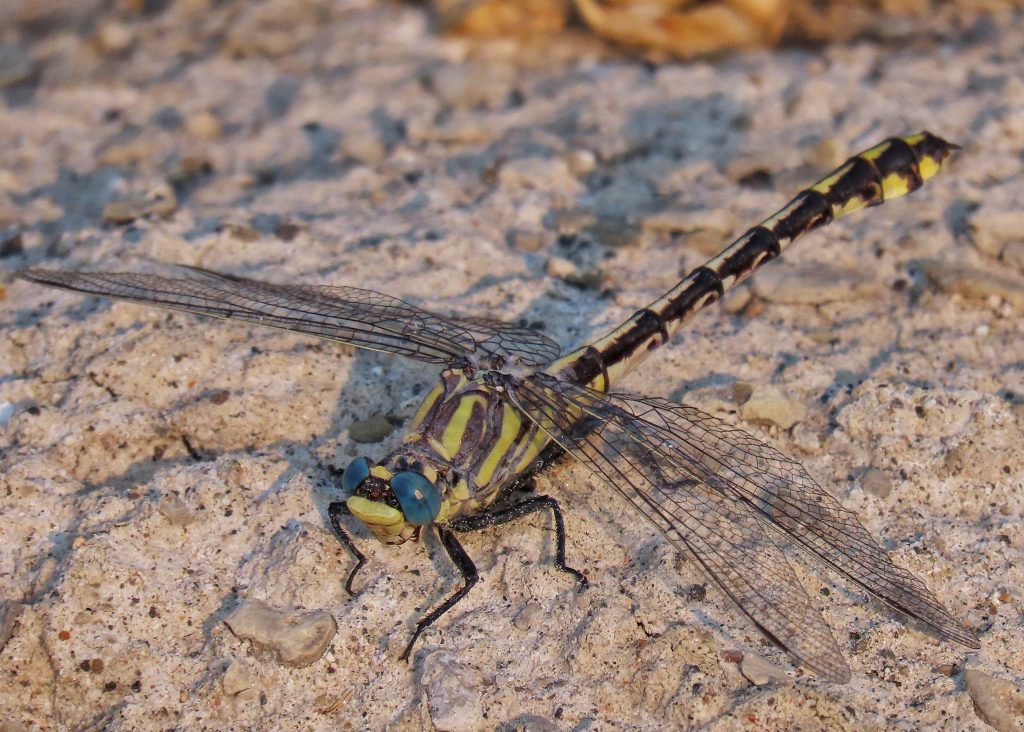
https://www.ncbi.nlm.nih.gov/pmc/articles/PMC6104399/
http://thedragonflywhisperer.blogspot.com/2018/02/species-spotlight-columbia-clubtail.html?m=1
Size- TL 54-60mm
Habitat- Sagebrush steppe watercourses with areas of sandy or muddy bottoms.
Range- Columbia, John Day, Owyhee River basins in our region.
Flight Season- June to August
